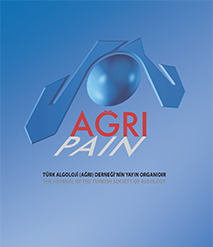Quick Search
Volume: 13 Issue: 4 - 2001
| 1. | Induction and assessment of experimental pain from human muscle L. Arendt Nielsen, A. Yücel Pages 9 - 14 In recent years new experimental research has been initiated on investigations of muscle pain. This is important as the socio-econonic impact of musculoskeletal pain disorders is substantial and new insight into the pathophysiological mechanisms can help to preventy cronicity. Several experimental models have been used to induce and assess muscle pain in humans. Intramuscular (i.m.) injection of algogenic substances (bradykinin, serotonin, capsaicin, hypertonic saline), i.m. electrical stimulation, ischemia or eccentric exercise are some examples. Injection of hypertonic saline has been extensively used in the past because the quality of the induced pain is comparable to clinical muscle pain with localised and referred pain. The advantage of continuous intramuscular electrical stimulation is that the local and referred pain vanish immediately when the stimulation is terminated. Infusion of a variety of algogenic substances have been tested and combination of e.g. serotonin and bradykinin is specifically effective to cause muscular hyperalgesia to muscle pressure stimulation. For methods that employed, it seems that the size of the referred pain is related to the intensity and duration of the ongoing muscle pain and most likely also to the degree of central hyperexcitability. Experimental models are valuable to assess basic aspects of muscle pain in volunteers and in patients with musculoskeletal disorders. |





